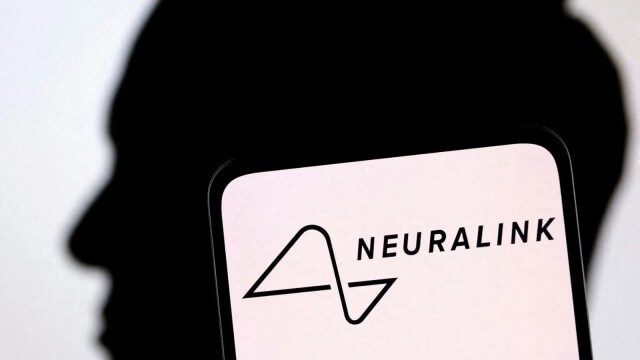Neuralink Translation: A revolution to the Artificial intelligence [2024]

Neuralink is a neuro-technology company founded by Elon Musk and others, with the goal of developing brain-machine interface (BMI) technologies. Its primary aim is to create devices that can be implanted in the human brain to enable direct communication between the brain and computers or other external devices. Here we will see how the Neuralink translation works and its usefulness.
1. What is the purpose of Neuralink?
The ultimate goal of Neuralink is to enhance human capabilities by merging the human brain with artificial intelligence (AI) and other advanced technologies. This could potentially lead to breakthroughs in treating neurological disorders, enhancing cognitive abilities, and enabling new forms of communication and interaction.
2. How does Neuralink Translation work?

Neuralink’s translation technology works by establishing a direct communication link between the human brain and external devices. Here’s a simplified explanation of how it works:
- Implantation: Neuralink implants tiny, flexible threads, thinner than a human hair, directly into the brain. These threads are embedded with electrodes that can both record neural activity and stimulate neurons.
- Recording Neural Activity: The electrodes on the threads detect the electrical signals produced by neurons in the brain.
- Signal Processing: The recorded neural activity is then processed by Neuralink’s sophisticated algorithms. These algorithms decode the neural signals and translate them into commands or actions.
- Interfacing with External Devices: Once the neural signals are decoded, they are sent wirelessly to external devices, such as computers or smartphones.
- Feedback Loop: Neuralink’s system also allows for bidirectional communication, meaning that it can both record neural activity and stimulate neurons. This enables not only the translation of brain signals into actions, but also the delivery of sensory feedback back to the brain, creating a closed-loop system.
3. What are the potential applications of Neuralink?
Neuralink has several potential applications, including:
- Medical Treatments: Neuralink’s technology could revolutionize the treatment of neurological disorders such as Parkinson’s disease, epilepsy, and spinal cord injuries by restoring lost functionality to the brain and nervous system.
- Enhanced Cognitive Abilities: By directly interfacing with the brain, Neuralink could potentially enhance cognitive abilities such as memory, learning, and problem-solving.
- Brain-Computer Interfaces (BCIs): Neuralink’s devices could enable new forms of communication and interaction by allowing users to control computers, prosthetic limbs, or other devices with their thoughts alone.
4. What are the challenges facing Neuralink?
Neuralink faces several significant challenges in developing its technology:
- Biocompatibility: Ensuring that Neuralink’s devices are biocompatible and safe for long-term implantation in the brain is a major technical challenge.
- Data Interpretation: Decoding and interpreting the vast amounts of data collected from the brain poses a significant computational challenge.
- Ethical and Privacy Concerns: The use of brain-machine interfaces raises important ethical and privacy concerns, particularly regarding issues such as consent, autonomy, and the potential for misuse of personal data.
5. What progress has Neuralink made so far?
Neuralink has made significant progress since its founding, including:
- Prototype Demonstrations: Neuralink has demonstrated prototypes of its electrode arrays and implanted them in animal subjects, showing promising results in terms of safety and functionality.
- Research and Development: The company has conducted extensive research and development to refine its technology and overcome technical challenges.
- Regulatory Approval: Neuralink has received regulatory approval from the U.S. Food and Drug Administration (FDA) to conduct human clinical trials, marking a significant milestone in its development.
6. What are the implications of Neuralink for society?
Neuralink has the potential to have profound implications for society, including:
- Medical Breakthroughs: Neuralink’s technology could lead to breakthroughs in the treatment of neurological disorders and other medical conditions, improving the lives of millions of people around the world.
- Ethical and Social Challenges: The widespread adoption of brain-machine interfaces raises important ethical and social challenges, including concerns about privacy, autonomy, and inequality.
- Human-AI Integration: Neuralink’s vision of merging humans with AI raises questions about what it means to be human and the potential impact of advanced technology on society.
7. How does Neuralink compare to other brain-machine interface technologies?
Neuralink is not the only company working on brain-machine interface technologies. Other notable companies in this field include Kernel, CTRL-labs (acquired by Facebook), and DARPA-funded research initiatives. Neuralink distinguishes itself through its focus on developing high-density electrode arrays and its ambitious vision of merging humans with AI.
8. What are the long-term goals of Neuralink?
Neuralink’s long-term goals include:
- Human-AI Integration: Neuralink envisions a future where humans are seamlessly integrated with AI, enabling new forms of communication, collaboration, and creativity.
- Health and Wellness: Neuralink aims to improve human health and wellness by developing technologies to treat neurological disorders and enhance cognitive abilities.
- Space Exploration: Elon Musk has suggested that Neuralink’s technology could play a role in his vision of colonizing Mars by enabling direct communication between the human brain and computer systems in space.
9. How can I get involved with Neuralink?
Neuralink is primarily focused on research and development at this stage, but the company may offer opportunities for collaboration or employment in the future. You can stay updated on Neuralink’s progress by following the company’s official website, social media channels, and announcements from Elon Musk.
10. Is Neuralink safe?
Safety is a primary concern for Neuralink. The company is working to ensure that its devices are biocompatible and safe for long-term implantation in the brain. Extensive research and development are being conducted to address safety concerns.
11. How does Neuralink plan to address ethical concerns?
Neuralink is committed to addressing ethical concerns related to its technology. The company aims to ensure transparency, informed consent, and user autonomy in its research and development process.
12. What are the potential risks of Neuralink’s technology?
Potential risks include surgical complications, infections, malfunctioning devices, and the misuse of personal data collected from the brain. Neuralink is working to mitigate these risks through rigorous testing and safety measures.
13. Will Neuralink be accessible to everyone?
Neuralink’s ultimate goal is to make its technology accessible to as many people as possible. However, initial implementations may be limited to medical applications or research purposes before becoming more widely available.
14. How does Neuralink plan to ensure data privacy?
Neuralink is committed to protecting the privacy of user data collected from its devices. The company plans to implement robust encryption and security measures to safeguard sensitive information.
Summary: Neuralink Translation
Neuralink holds the promise of revolutionizing our understanding of the brain and unlocking new capabilities for humanity. While the Neuralink translation has still many challenges to overcome, the progress made by Neuralink so far suggests that we may be on the brink of a new era in human-machine interaction.
Please comment us about the post “Neuralink Translation: A revolution to the Artificial intelligence“
Read more:
- Cooking Oil-Free: Simple Ways to Cook Healthier Meals- 15 FAQs
- 15 Frequency Asked Questions (FAQs) on Recycling of Water Bottle effectively
- Frequently Asked Questions (FAQs) on Google Classroom
- Frequently Asked Questions (FAQs) on Taj Mahal in India
- 15 FAQs on 80-20 Rule (Pareto Principle)
- 15 FAQs on Personal Finance






